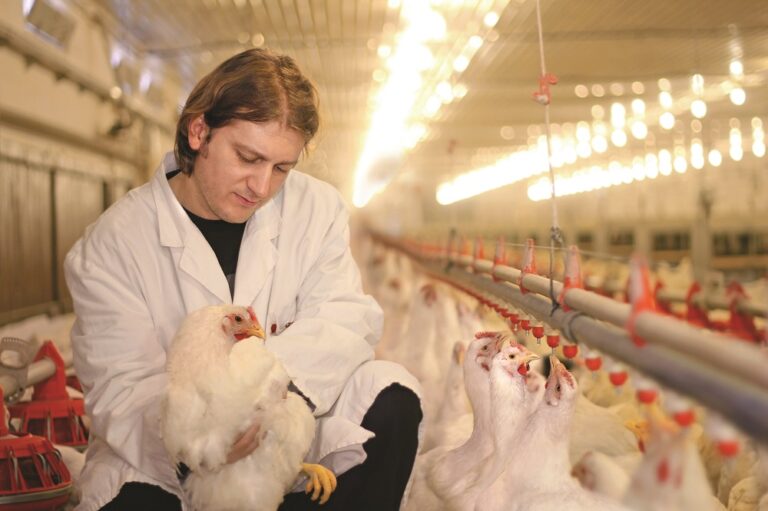Positive biofilms can help prevent the build–up of undesirable bacteria in broiler houses
This article was first published in the Poultry Health supplement to August’s issue of Poultry Business
Creating a positive biofilm in the birds’ external environment can help prevent the build-up of undesirable bacteria such as Staphylococcus aureus, Salmonella and Campylobacter, according to trial results.
By taking steps to create a positive microbial balance within broiler housing, producers can prevent the build-up of negative bacteria, reducing the risk of health and welfare challenges.
Lientjie Colahan, environmental product manager at Lallemand Animal Nutrition, says microorganisms are everywhere and a biofilm is simply ‘a community of microorganisms fixed to a surface’.
She says, biofilms are typically associated with the build-up of bad bacteria, however they can be beneficial.
“Recent trials have shown the benefits of positive biofilms within broiler houses, reducing the prevalence of negative bacteria such as Salmonella and Campylobacter,” says Colahan.
“Implementing disinfection and cleaning protocols between flocks is already common practice and reduces initial infectious pressure within the shed, leaving a blank canvas for microbial growth.
“Adding a bacterial solution such as Lalfilm Pro, a highly concentrated mix of live Bacillus spp. and lactic acid bacteria (LAB), to these protocols can help fill the canvas with a protective biofilm.”
She adds: “By selecting a bacterial solution formulated for maximum adhesion, producers can increase the number of positive bacteria colonising the walls, ceiling, floor and all equipment within the broiler house, preventing the build-up of undesirable bacteria.
“By doing this before the birds arrive, the positive bacteria have a head start, enabling them to become established reducing the space for negative bacteria that may build-up within the building throughout the crop.”
Brazil trial results
A trial at the School of Veterinary Medicine in Brazil – undertaken by Lallemand Animal Nutrition – investigated how applying a bacterial solution, Lalfilm Pro, could help to avoid the build-up of negative microorganisms such as Staphylococcus aureus, Salmonella spp. and Campylobacter.
Colahan says the positive bacterial solution was applied on day one, with the test bacteria being applied on day two, and bacterial counts taken on day three and four.
“The protocol was conducted under two different environmental conditions – polystyrene and a sterilised organic poultry litter.
“The results indicated that two Salmonella species, Salmonella heidelberg and Salmonella gallinarum, had limited growth in all environmental conditions when inoculated with the positive bacterial solution.
“When looking at Methicillin-resistant Staphylococcus aureus (MRSA), limited growth was seen in all environmental conditions. After 24 hours of applying the bacterial solution, MRSA growth was significantly lower by 3.5 log on polystyrene surfaces and 1.3 log on organic litter.
“Again, Campylobacter jejuni had limited growth on polystyrene surfaces previously inoculated with the positive bacterial solution. After 48 hours, Campylobacter jejuni growth was significantly lower by 1.4 log,” she adds.
Colahan says that colonisation by the tested bacteria was limited in all environmental conditions when previously inoculated with Lalfilm Pro. The results indicate that the positive biofilm created by the solution is an effective tool to help reduce the recolonisation of the surfaces by undesirable bacteria.
How do positive biofilms work?
There are four key ways positive biofilms work once they have been established on a surface or environment.
Anti-adhesive effect: the presence of the positive biofilm itself, or the molecules it produces, can limit the development of competitor biofilms on the surface as the competing bacteria are unable to attach to the external slime layer of the biofilm.
Spatial competition: by occupying the available space on a surface and continuing to grow, there is no space for new, negative biofilms to establish.
Nutritional competition: the positive biofilms will consume all available nutritional resource. This means any newly established negative biofilms will be unable to develop.
Microbial interference: positive biofilms can create an unfavourable environment for negative biofilms by secreting organic acids that help repel their presence.


